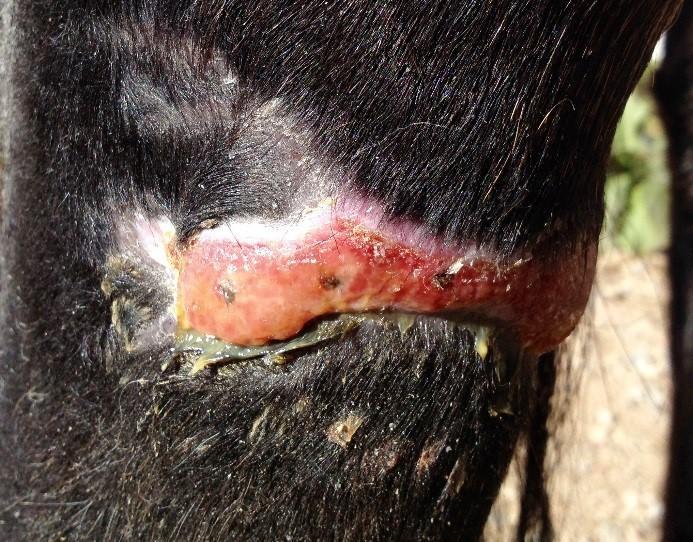By Charles Maker, DVM
Serious limb wounds and their complications such as infections, contribute significantly to the time to complete healing and cost of repair for affected horses. Traumatic limb injuries are particularly challenging due to their configuration and effect on tissue blood supply and are often further compromised due to swelling and inflammation. Microorganisms rapidly invade the injured tissue, leading to wound infection and eventually burn sepsis. Factors related to the likelihood of wound sepsis include the degree of contamination, wound size and location, depth, and age of the patients.
Early identification of risk factors, excision of devitalized injured tissue, and closure of full-thickness wounds has been shown to reduce complication rate, length of hospital stay and necessary care, and pain in patients. Proper cleaning when performed before bacterial colonization and application of proper wound dressings during different stages of healing more often circumvents the development of wound sepsis and dramatically reduces time to healing.
All wounds should be gently clipped of hair and then gently rinsed in dilute povidone-iodine solution or hypertonic saline. Animals with thick coats may hide more extensive wounds than initially suspected, so liberal clipping should be performed in these cases. After the wounds are cleaned, topical agents can be applied to decrease pain, prevent desiccation, and delay bacterial growth until the wound is surgically closed by your veterinarian. Silver sulfadiazine is used most commonly as it has broad antibacterial activity, is soothing, and has no systemic effects. Topical agents can be applied directly to wounds with a clean tongue depressor, or the burn can be covered with impregnated dressings. Gloves should be worn at all times during wound care to avoid spread of resistant organisms. Prophylactic antibiotic usage is controversial as penetration into devitalized tissue is often less than desired and the potential for development of antibiotic resistance exists. Yet with many horses distal limb injuries, antibiotic therapy is generally used for documented infections where contamination and infection are present often based upon culture and sensitivity.
While the choice of dressing is a much-debated topic, of critical importance is the maintenance of a moist environment to promote rapid wound healing. This may be accomplished through the use of semi-occlusive dressings, or with various types of hydrogel shown to speed healing and
to decrease scarring of partial thickness wounds. Wounds with heavy exudation may be managed with dry, absorbent antimicrobial bandaging materials applied in layers. Following application of
silver sulfadiazine, a non-adherent and porous inner layer is applied allowing passage of fluid and exudates. Absorbent padding or gauze should then be applied, followed by an elastic outer layer. Bandages should always be loose enough to avoid putting additional pressure on the wounds. Skin grafting techniques can be used to diminish the time to healing and improve the outcome in many of our affected horses.

